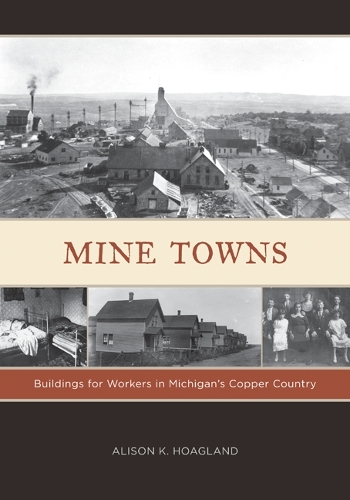
Mine Towns: Buildings for Workers in Michigans Copper Country
(Paperback)
Publishing Details
Mine Towns: Buildings for Workers in Michigans Copper Country
By (Author) Alison K. Hoagland
University of Minnesota Press
University of Minnesota Press
29th June 2010
United States
Classifications
General
Non Fiction
History of the Americas
Local history
728.09774
Physical Properties
Paperback
328
Width 178mm, Height 254mm, Spine 23mm
Description
During the nineteenth century, the Keweenaw Peninsula of Northern Michigan was the site of Americas first mineral land rush as companies hastened to profit from the regions vast copper deposits. In order to lure workers to such a remote locationand work long hours in dangerous conditionscompanies offered not just competitive wages but also helped provide the very infrastructure of town life in the form of affordable housing, schools, health-care facilities, and churches.The first working-class history of domestic life in Copper Country company towns during the boom years of 1890 to 1918, Alison K. Hoaglands Mine TownsFocusing on how the exchange between company managers and a largely immigrant workforce took the form of negotiation rather than a top-down system, Hoagland examines surviving buildings and uses Copper Countrys built environment to map this remarkable connection between a company and its workers at the height of Michigans largest land rush.
Author Bio
Alison K. Hoagland is professor of history and historic preservation at Michigan Technological University and the author of Buildings of Alaska and Army Architecture in the West: Forts Laramie, Bridger, and D. A. Russell, 18491912.
